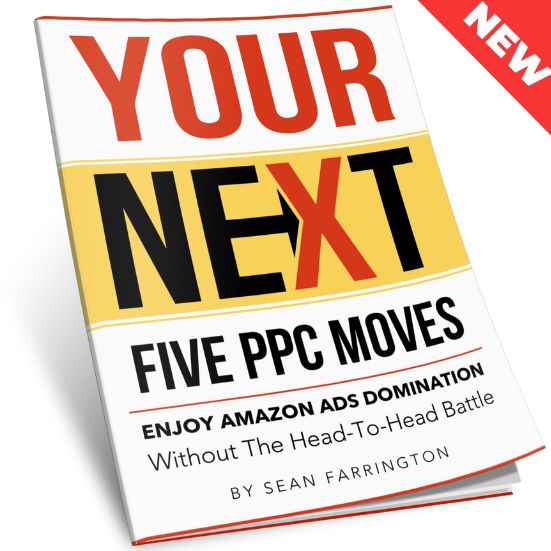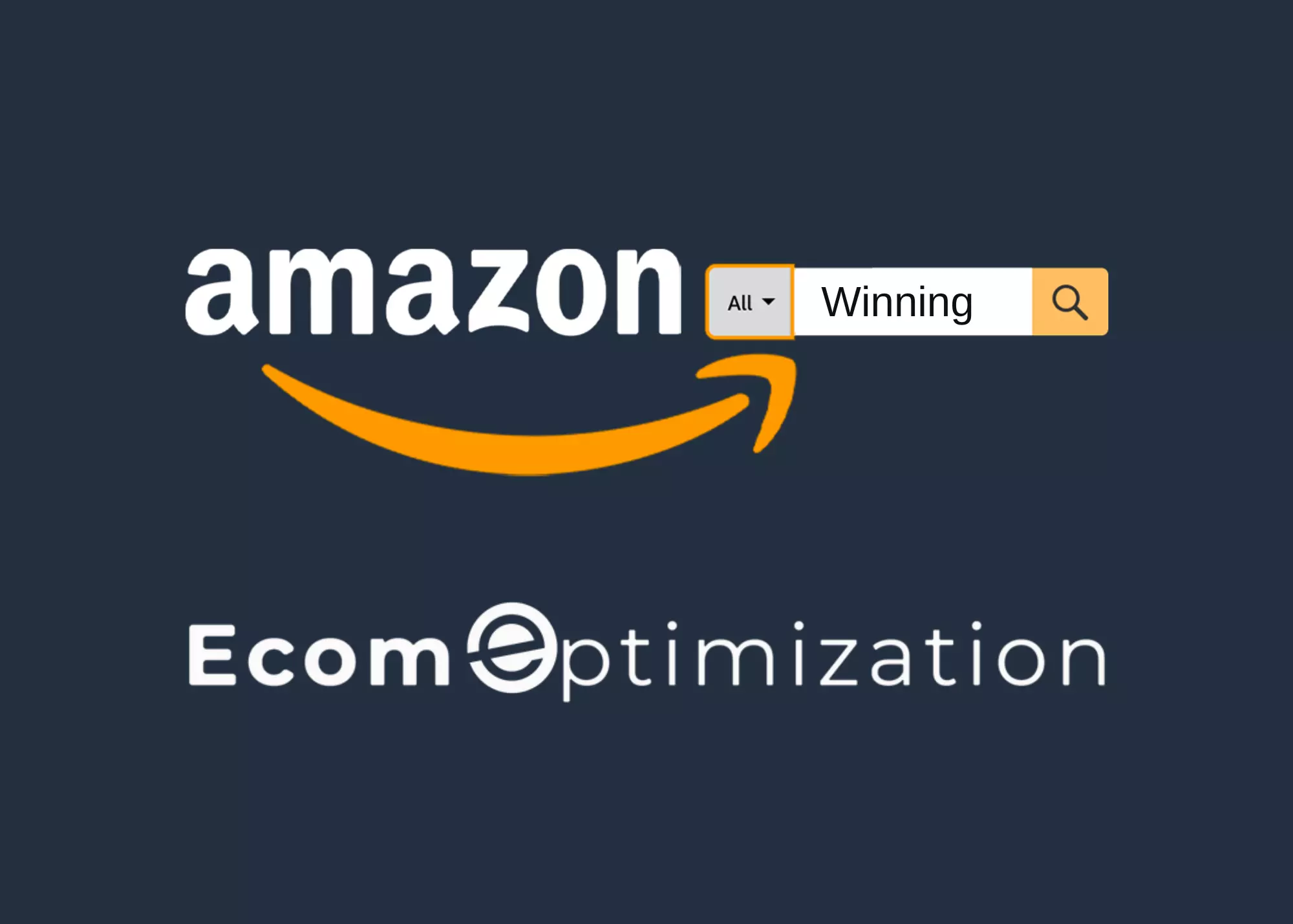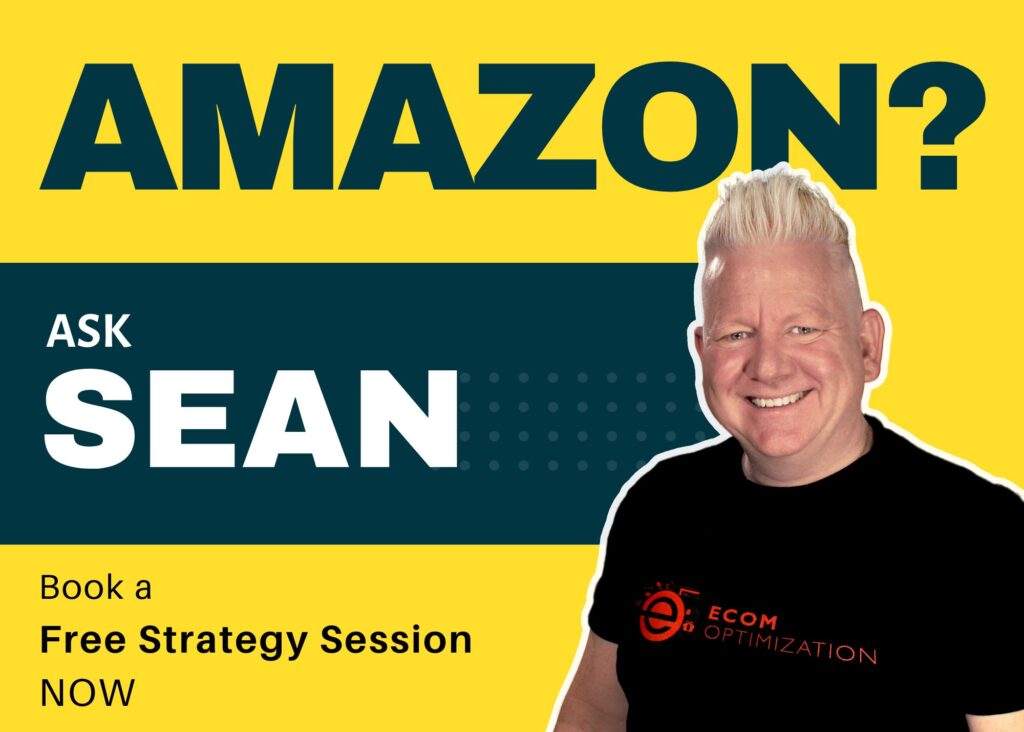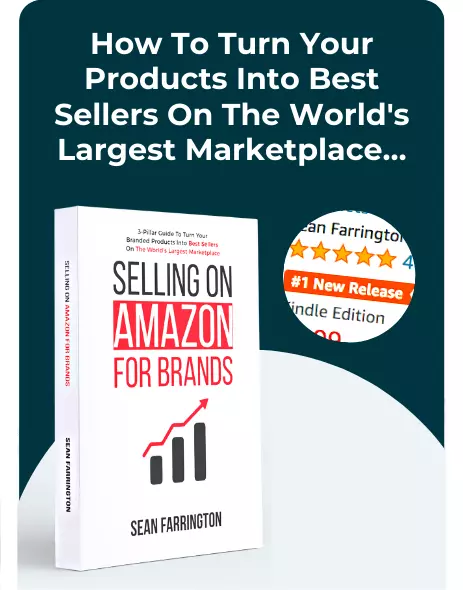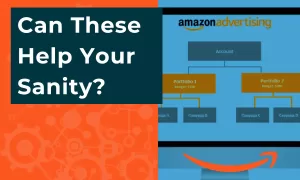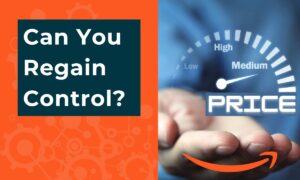DSP Advertising (Amazon’s Secret Weapon): Insights From An Amazon Ad Agency
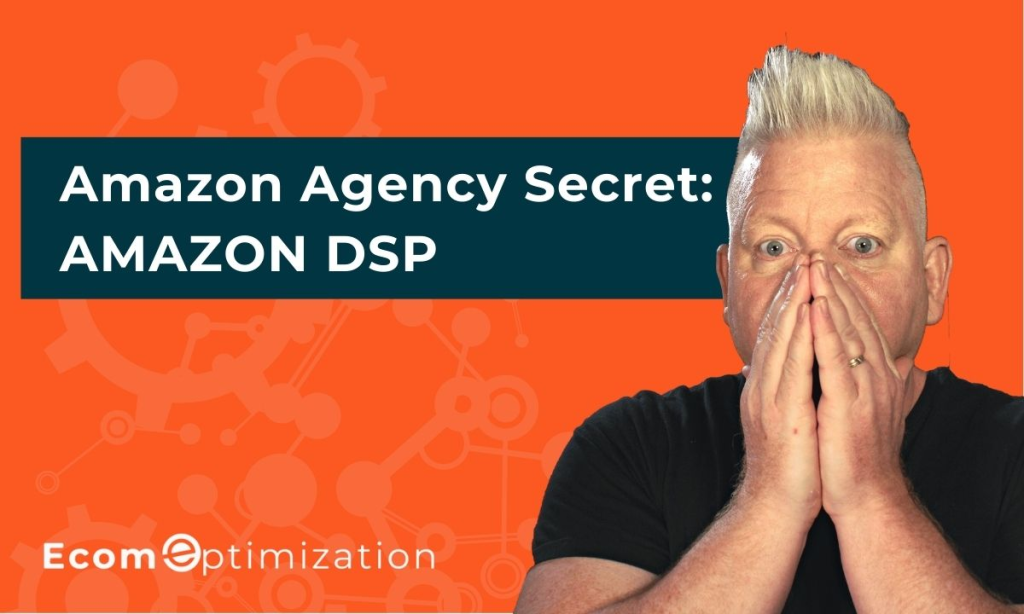
Key Points:
- DSP Advertising stands for Demand-Side Platform Advertising, which is a programmatic advertising technology that allows advertisers to purchase and optimize digital ads in real-time.
- eCommerce brands can optimize their DSP ad campaigns through audience targeting, bidding strategies, and creative optimization.
- Ecom Optimization offers end-to-end solutions for eCommerce brands to optimize their DSP advertising campaigns. They have a team of experienced professionals and offer a free consultation to assess current campaigns and provide recommendations for improvement.
GET YOUR FREE COPY
(Limited Offer)
These are the shocking moves that your PPC specialist doesn’t know.
Now, you’ll be plotting super-profitable combinations that competitors never see coming.
This fast-paced PPC Playbook shows you everything, and it is all free. Why wait?
Table of Contents
Introduction
Shhh… You’re about to discover an Agency secret that most Amazon sellers know nothing about… Amazon DSP, or Amazon Demand-Side Platform ads.
What a powerful customer acquisition tool! Amazon DSP lets businesses reach and engage their new and existing audiences across the Amazon ecosystem and beyond.
Amazon, the largest e-commerce company in the world (and the 3rd largest search engine), has introduced this as Amazon’s challenger to Google Display Ads.
Whether you’re a small business owner or a large enterprise, Amazon DSP can help you, drive more traffic and sales, and build a stronger brand presence.
In this blog post, we’ll explore the key features and benefits of Amazon DSP and how you can use it to achieve your marketing goals.
Key Features of Amazon DSP
Amazon DSP (Amazon demand-side platform) allows advertisers to programmatically buy advertising on and off of Amazon.
- Audio, display, and video ad placements on Amazon’s websites, apps, and third-party websites
- Uses real-time bidding (RTB).
- Offers advertisers access to Amazon’s unique audience data, enabling them to reach their target audience with personalized, relevant ads.
- Allows you to run off-Amazon ads to drive shoppers back to Amazon or to a website.
Programmatic Advertising

Amazon DSP leverages programmatic advertising technology to automate the process of buying and selling ad inventory.
With programmatic advertising, you can target your ads to specific audiences based on their demographics, interests, behaviors, and other factors. This allows you to reach the right people at the right time and place, with personalized messaging and creatives.
Programmatic advertising is a form of digital marketing that replaces human effort with machine-learning algorithms.
This type of advertising is analyzed in real-time to meet the advertiser’s objectives. Most programmatic ads are sold using a CPM model (Cost per thousand, or CPM, is the amount paid per 1,000 ad impressions) and are usually cheaper than direct purchases.
Ads can be purchased using either a fixed or dynamic CPM model
A fixed CPM is a set cost for every thousand views, and this can be used as an aggressive strategy to purchase exclusive deals or direct offers at premium prices.
A dCPM provides the flexibility to set different prices for each impression and helps to optimize campaigns. This technology enables advertisers to better manage their budgets.
Programmatic Advertising technology means:
- Supply is not always guaranteed.
- You can purchase using either a CPM or dCPM model.
- You can bid on impressions via real-time auctions, or buy guaranteed ad impressions direct from publishers.
Multi-Channel Reach

Amazon demand side platform (DSP) offers a multi-channel reach, allowing you to extend your ad campaigns beyond Amazon’s platform to reach audiences across the web, mobile, and connected TV.
You can access premium ad inventory from Amazon-owned sites such as IMDb, Twitch, as well as on any Amazon Fire TV stick, and third-party ad exchanges, and publishers.
Cross-device targeting

Beyond targeting multiple channels, Amazon DSP also enables advertisers to reach customers across multiple devices, including desktop display ads, mobile ads, and in-stream video on connected TVs, ensuring that campaigns are delivered to the relevant audiences on the right device.
Link-In Vs. Link-Out Campaigns
The Amazon Digital Services Platform provides the opportunity to develop both link-in and link-out campaigns, with the fundamental distinction being where the shopper ends up.
Link-in campaigns allow you to drive traffic directly to an on-Amazon destination such as your product detail page or store. This is beneficial for brands looking to increase their visibility and engagement on Amazon.
Link-out campaigns direct shoppers off of the Amazon platform and onto a brand’s website. This can be used when brands want to showcase products that are not listed on Amazon, or if they want more control over how customers engage with their content beyond what is offered by Amazon.
Both link-in and link-out campaigns offer unique advantages depending on what type of goal your brand might have for its advertising efforts.
Advanced Targeting Options

Amazon demand side platform offers access to Amazon’s unique audience insights and data for advanced targeting so you can reach your target audience with personalized, relevant ads.
Unique targeting includes:
- Shopping behavior
- Audience demographics,
- Geographic location
- Search history
- Purchase history
- Off-Amazon shopping behavior
- Even preferred brands and models of vehicles!
With Amazon DSP, you can use these advanced targeting options to refine your audience targeting and optimize your ad spend. You can also create custom audience segments and lookalike audiences.
What are the different ad formats available on Amazon DSP?

Amazon DSP offers a range of customizable formats, allowing advertisers to create engaging ads that resonate with their target audience.
Amazon demand side platform ad formats include:
- Display ads
- Video ads
- Audio ads
Display ads can be delivered in a variety of sizes, including standard display units, custom units, and high-impact units.
Video ads can be delivered in-stream or out-stream, and can be customized to fit a range of formats and lengths.
Audio can be delivered as pre-roll or mid-roll ads and can be targeted based on genre, artist, and other factors.
Real-Time Bidding (RTB)

Amazon DSP uses real-time bidding (RTB) to programmatically buy dynamic eCommerce ads across Amazon’s properties and third-party websites.
When a user loads a webpage, a request is sent to various auction houses (SSPs). This process is known as real-time bidding, and it does not guarantee that an impression will be won.
There are two bid strategies available: delivery or performance-focused.
Amazon DSP allows advertisers to choose between delivery or performance-focused strategies to adjust bids for better results.
The initial bid supplied by the advertiser acts as a starting point for the modifiers, and the max bid sets the maximum amount that can be bid for any empty ad space.
Advertisers bid on the dynamic eCommerce ads placements they want, and the highest bidder wins the auction and gets their ad displayed.
Brand Safety Controls
Amazon demand-side platform (DSP) provides advertisers with a variety of brand safety controls, including content and category exclusions, to help ensure that their ads are displayed in safe and appropriate environments.
Robust Reporting and Analytics

Amazon demand side platform (DSP) also provides robust reporting and analytics tools that allow you to monitor and optimize your ad campaigns’ performance in real-time and optimize them for better results.
You can track key metrics:
- Impressions
- Clicks
- Conversions
- ROI
Use this data to make data-driven decisions that improve your advertising ROI and drive more revenue.
How does Amazon DSP differ from other ad networks (ie. the big "G")?

One of the key differences between Amazon DSP and other ad networks is the access to Amazon’s vast customer data.
This data allows advertisers to create highly targeted campaigns that are more likely to resonate with their desired audiences.
Additionally, Amazon DSP offers real-time advertising performance, reporting, and optimization, which allows advertisers to make data-driven decisions and adjust campaigns in real-time for maximum ROI.
Understanding the Key Differences Between DSP and Sponsored Display Ads
For many brand owners (and even some digital marketers)) there seems to be a bit of confusion about the differences between Amazon DSP and the classic Sponsored Ads.
While each one is a powerful platform with unique capabilities and targeting options, there are key differences.
Let’s break this down so you can choose the one that best suits your advertising goals and budget.
What is Sponsored Display?
Sponsored Display allows advertisers to promote their sponsored display ads and products ads only to shoppers who are actively browsing the platform.
The platform allows advertisers to target users based on their recent shopping behavior and interests, making sponsored display ads it an effective way to drive sales for a specific product or category.
Breakdown: Key Differences between DSP and Sponsored Display

- Targeting Capabilities: This is the biggest differentiation – DSP offers more advanced targeting capabilities With DSP, advertisers can target users based on a wide range of criteria, including demographics, interests, and behaviors. They can also target users based on their purchase history and product views on Amazon. In contrast, Sponsored Display ads only allows advertisers to target users based on their recent shopping behavior and interests within Amazon.
- Ad Formats: DSP allows advertisers to use a wide range of ad formats, including display, video, and audio ads. Sponsored Display, on the other hand, only offers display ads (Sponsored Brands ads – a different type of ad – has video ads capabilities).
- Reach: DSP allows advertisers to reach audiences both on and off Amazon’s marketplace. In contrast, Sponsored Display only targets Amazon users who are actively browsing the platform.
- Minimum Spend: This is the second biggest differentiator – DSP has a higher minimum spend requirement compared to Sponsored Display. DSP requires a minimum spend of $35,000, while Sponsored Display has a minimum spend requirement of $1.
Whether you choose DSP, Sponsored or sponsored Display ads, or both, Amazon Advertising provides a powerful way to reach your target audience and drive sales for your business.
How to Build a Strong Marketing Campaign with Amazon DSP Advertising

- Define your campaign goals and target audience: The first step in building a strong marketing campaign with Amazon DSP advertising is to define your campaign goals and target audience. Amazon DSP allows you to target audiences based on factors such as age, gender, location, interests, and behaviors.
- Choose your ad format: Amazon DSP offers a variety of ad formats, including display ads, video ads, and audio ads. Choose the format that best suits your campaign goals and target audience.
- Create compelling ad content: Your ad content should be aesthetically appealing, emotionally engaging, and include a clear call-to-action (CTA). Use high-quality images, audio, and videos, and make sure your messaging is clear, concise, and powerful.
- Set your budget: Amazon DSP allows you to set a budget for your campaign, and you only pay when someone clicks on your ad. Set a budget that aligns with your campaign goals and monitor your spending closely.
- Monitor and optimize your campaign: Monitor your campaign regularly and make adjustments as needed. Amazon DSP offers real-time reporting, so you can see how your ads are performing and make changes to improve performance.
Advanced Strategy: Retargeting with Amazon DSP

What is Retargeting?
Retargeting involves showing ads to people who have already interacted with your brand in some way.
This could include website visitors, people who have added items to their shopping cart but not completed a purchase, or previous customers.
Retargeting works by placing a tracking pixel on your website, which allows you to track the behavior of your visitors. You can then use this information to target those visitors with relevant ads, encouraging them to return to your website and complete a purchase.
How Does Retargeting Work with Amazon DSP?
Amazon DSP allows advertisers to retarget their audience both on and off Amazon. This means you can show ads to people who have previously interacted with your brand on Amazon, previous customers, as well as those who have visited your website or engaged with your brand elsewhere on the internet.
To set up retargeting with Amazon DSP, you’ll need to create a custom audience based on your tracking pixel data. You can then use this audience to target your ads to people who have previously shown an interest in your ad type or brand.
Best Practices for Retargeting with Amazon DSP
- Use High-Quality Creative: When it comes to retargeting, you’ll be showing ads to people who are already familiar with your brand. To capture their attention and encourage them to take action, it’s important to use high-quality creative that stands out.
- Segment Your Audience: Not all retargeting audiences are created equal. By segmenting your audience based on their behavior, you can create more targeted ads that are tailored to their specific interests.
- Set Frequency Caps: Retargeting ads can quickly become overwhelming if you’re showing them too frequently. To avoid annoying your audience and driving them away, it’s important to set frequency caps that limit the number of times someone sees your ads.
- Use Custom Landing Pages: When someone clicks on your retargeting ad, they should be taken to a landing page that’s tailored to their interests. By creating custom landing pages for your retargeting audience, you can increase the chances of converting them into customers.
Here's a step-by-step guide on how to set up an Amazon DSP campaign:

- Log in to your Amazon DSP account.
- Click on the “Create campaign” button.
- Choose your campaign objective.
- Select your targeting options, including audience and inventory targeting.
- Choose your ad format and create your ad.
- Set your bidding strategy and budget.
- Launch your campaign.
Tips for optimizing your Amazon DSP campaign
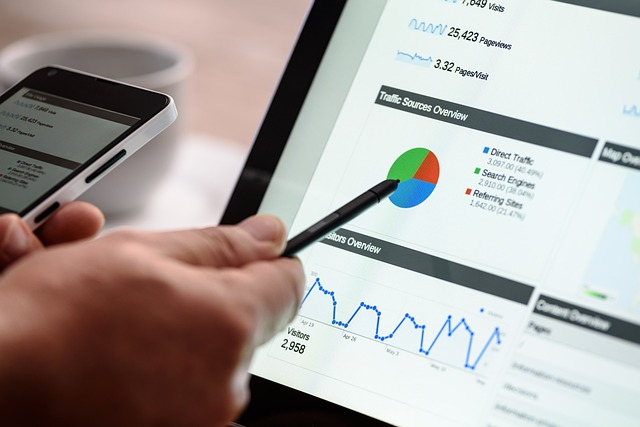
- Test different ad formats and targeting options to see what works best for your campaign.
- Continuously monitor and adjust your bids and targeting options to optimize ad performance.
- Use high-quality creative assets, such as images, audio, and videos, to increase engagement and brand awareness.
- Use Amazon’s reporting and analytics tools to track your campaign performance and identify areas for improvement.
Conclusion
FAQ
Q: Who can use Amazon DSP?
Amazon DSP is available to advertisers of all sizes, from small businesses to large enterprises.
However, to get started with Amazon DSP, you need to have an Amazon advertising account and a minimum budget of $35,000.
Q: How does Amazon DSP compare to other advertising platforms?
Amazon DSP is unique in that it offers access to Amazon’s vast e-commerce audience and powerful targeting options, such as purchase history and offline behavior. It also provides robust reporting and analytics tools that allow you to track and optimize your ad campaigns’ performance in real-time.
Q: How is Amazon DSP Advertising different from Amazon Sponsored Products?
A: Amazon Sponsored Products are ads that appear within Amazon search results and are targeted based on keywords. Amazon DSP Advertising, on the other hand, uses programmatic advertising technology to display ads on and off Amazon, targeting specific audiences based on their interests, behavior, and demographics.
Q: Should I Choose Amazon DPS or Sponsored Display?
A: The platform that is right for your business will depend on your advertising goals and budget. If you want to reach audiences both on and off Amazon’s marketplace and have a larger budget, DSP may be the better option. If you want to promote a specific product or category on Amazon and have a smaller budget, Sponsored Display may be the better option.
Q: Can I use both DSP and Sponsored Display?
A: Yes, you can use both platforms to complement your advertising strategy. Using both platforms can help you reach a wider audience and achieve your advertising goals more effectively.
Q: How do I get started with Amazon DSP?
A: To get started with Amazon DSP, you need to have an Amazon advertising account and contact an Amazon advertising representative to set up your account and discuss your advertising goals and budget. Once your account is set up, you can create ad spend and launch your ad campaigns using the Amazon DSP console.
Q. What targeting options does Amazon DSP offer?
A. Amazon DSP offers a range of targeting options for unique audiences, including audience demographics, geographic location, interests, and behaviors.
Q. How much does it cost to use Amazon DSP?
A. The cost of using Amazon DSP varies depending on the advertiser’s budget and the campaign objectives. Advertisers can set their budget and bid on impressions within their budget.
Q. Can I use Amazon DSP to advertise products that are not sold on Amazon?
A. Yes, Amazon DSP allows third-party sellers and advertisers to advertise products that are not sold on Amazon, but the ads will only be displayed on third party sellers websites.
Q: Can I track the performance of my Amazon DSP campaigns?
A: Yes, Amazon DSP provides real-time reporting on campaign performance, allowing advertisers to track and optimize campaigns in real-time.
Q: Can I use Amazon DSP to run campaigns on non-Amazon sites?
A: Yes, Amazon DSP allows advertisers to both programmatically buy display ads on a range of third-party sites and apps, as well as sponsored ads on Amazon-owned and operated sites and apps.
Q: How can businesses leverage pre-built audience segments within Amazon DSP?
A: Businesses can use pre-built audience segments to get audience insights and target specific demographics and interests such as age, gender, device type, and purchasing behavior.
Q: What are some targeting options available within Amazon DSP?
A: Some targeting options available within Amazon DSP include specific age ranges, device types, favorite streaming genres, and even preferred brands or models of vehicles.
Q: Can I retarget my Amazon customers with Amazon DSP?
A: Yes, you can retarget customers who have interacted with your product detail brand on Amazon using Amazon DSP.
Q: Can I use Amazon DSP to retarget people who have visited my own website?
A: Yes, Amazon DSP allows you to retarget people who have visited your website or engaged with your brand elsewhere on the internet.
Q: Do I need to have a tracking pixel on my website to use Amazon DSP for retargeting?
A: Yes, you’ll need to have a tracking pixel on your website to collect data on your visitors and create custom audiences for retargeting.
Q: How often should I show retargeting ads to my audience?
A: It’s important to set frequency caps that limit the number of times someone sees your retargeting ads for display, audio, and in stream or video content. This will help you avoid overwhelming your audience and driving them away.
Q: Can retargeting help me increase my advertising ROI?
A: Yes, retargeting is a powerful way to reach people who have already shown an interest in your brand, which can lead to increased conversions and a higher advertising ROI.
Q: Can I target specific Amazon customers with Amazon DSP?
Almost, you can target specific Amazon customers based on their search and purchase history, as well first party data such as third-party data.
Q: Why is Amazon’s DSP an underused tool?
A: Amazon’s DSP is an underused tool because many businesses are not aware of the vast array of targeting options available within the platform, and thus miss out on potential revenue and growth opportunities.
Ecom Optimization Amazon Account Management is here to Help
Ecom Optimization is a full-service Amazon Account Management Agency.
- Strategic Growth Planning
- Amazon Copywriting Optimization
- Amazon Image Optimization
- Paid Advertising Management
- Seller Support Management
- Amazon Enhanced Marketing
- Brand Reputation Management
- Amazon Posts
- Full-Service Amazon Account Management


